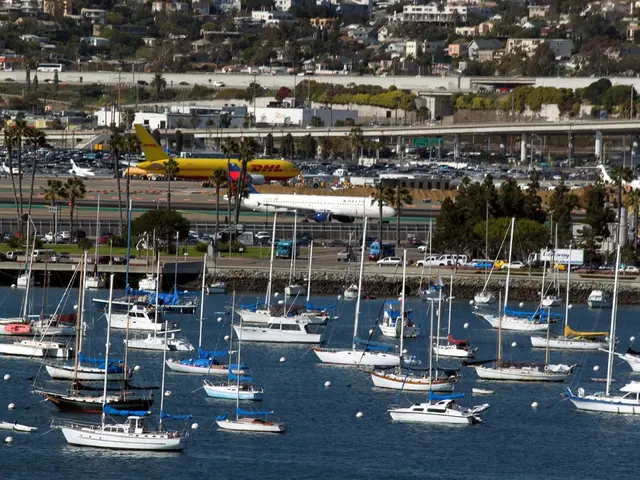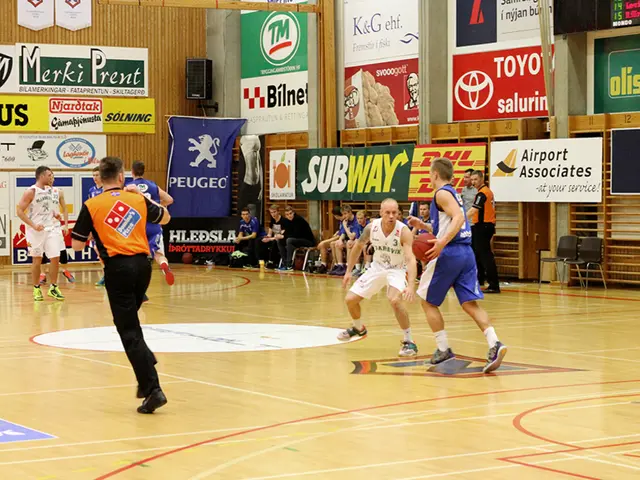Foreign nationals employed in Asti remitted 254 million euros to their home nations
A Look at asti's Remittances Over the Years
Over the past two decades, asti's remittances have painted a unique picture - a reflection of both local and global trends. As the fortune seekers today mirror those of yesteryears' Italians, asti's remittances have been on the move, reaching as far as 162 countries. These funds, totalling 254 million euros, represent 5.7% of the annual business volume of the province, worth 4.4 billion euros.
The Top Recipients
From 2005 to the present, Romania claims the top spot with a staggering 54 million sent, followed by Morocco (29.6 million) and Albania (28 million). Senegal and Peru also make the list with 15 and 12 million, respectively. China's sending pattern is worth noting, with 2.6 million on the Silk Road. The peak was in 2011, when 260,000 was remitted, but the last two years have seen a decline. However, in 2024, the 4,000 euros sent to their country by Chinese residents in the area increased to 5,000.
Mayor Maurizio Rasero offers an insightful perspective, noting that China is no longer the country that copies others but one that leads in many fields, bringing its excellence to asti. The investments made by the Chinese, he says, remain in the province since many of them bring their families and don't need to support anyone in their home country.
The Changing Landscape
Over the years, the communities sending the most money have changed. Between 2011 and 2021, it was the Romanians, Albanians, and Moroccans who sent the most. But today, Pakistan and Bangladesh are increasingly significant. Pakistanis have sent a whopping 9.1 million in 20 years and 1.7 million in 2024 alone. Bangladesh, too, has received 4 million in 20 years, but the figure jumped up to over 1.3 million last year.
In 2024, the Moroccan community still led the way in remittances, followed by Pakistanis, Bangladeshis, and South Americans who are mainly engaged in domestic work and healthcare. The remittance figures change, says Alberto Mossino, president of Piam, as they reflect the variations in the ethnic composition of the various communities settling in the area.
A Brief Exodus
Young men, seeking work and fortune, are the first to arrive in a new country, leaving their families in their home country. At the beginning of settlement, there are many remittances abroad. As migration becomes permanent, the money stays in the territory. Migrants send all the money they can to their wives and children who are still at home, much like our grandparents and great-grandparents did when they emigrated a century ago. When their families join them, remittances abroad decrease, as they are now used to maintain the children who are here with them.
A Global Perspective
Globally, remittances have become a crucial financial flow for many countries, often surpassing official development assistance and foreign direct investment in some regions. Notable trends include the rise of digital payment platforms, geographical shifts towards Asia, currency fluctuations, and regulatory changes. The top countries for remittance receipts include India, China, the Philippines, and Mexico. In Italy, common destinations for remittances include countries with historical ties or large Italian diaspora communities.
In the case of the Asti area, remittance flows are likely to mirror these national trends, with recipients located in countries with such ties. As the landscape of global migration continues to evolve, the remittances from the Asti area will undoubtedly reflect these changes, offering a snapshot of the region's diverse and dynamic population.
- The average remittance sent to Romania from 2005 to 2024 amounts to approximately 54 million euros, accounting for the largest share among the 162 countries that receive funds from the Asti region.
- The vast fashion-and-beauty, food-and-drink, travel, education-and-self-development, and sports industries in Romania have undoubtedly benefited from the consistent flow of remittances, contributing to a distinct lifestyle in the region.
- The business sector in Romania, fueled by personal-finance influx from Asti, could potentially reach new heights, considering the substantial amount of finance received.
- As the second highest remittance receiver, Morocco has steadily ranked among the top recipients, contributing significantly to the annual business volume of the Asti region with 29.6 million euros between 2005 and 2024.
- By 2024, the income generated by Chinese residents in the Asti area rose from 4,000 euros to 5,000 euros, demonstrating growth in business relations and personal-finance opportunities between the two regions.
- The changing landscape of global migration and industry expansion has led to an increase in remittances from Pakistan, with approximately 9.1 million euros sent in the past 20 years, and Bangladesh, receiving over 1.3 million euros in 2021.
- Although the Moroccan community still remains a significant contributor to Asti's remittances, the last decade has seen an influx of Pakistanis and Bangladeshis, changing the demographic composition of the remittance senders in the region.
- In recent years, a decrease in remittances to China may be attributed to the increasing self-sufficiency of the Chinese diaspora in Asti, with many choosing to invest and lead their excellence in various local industries rather than sending money back home.







